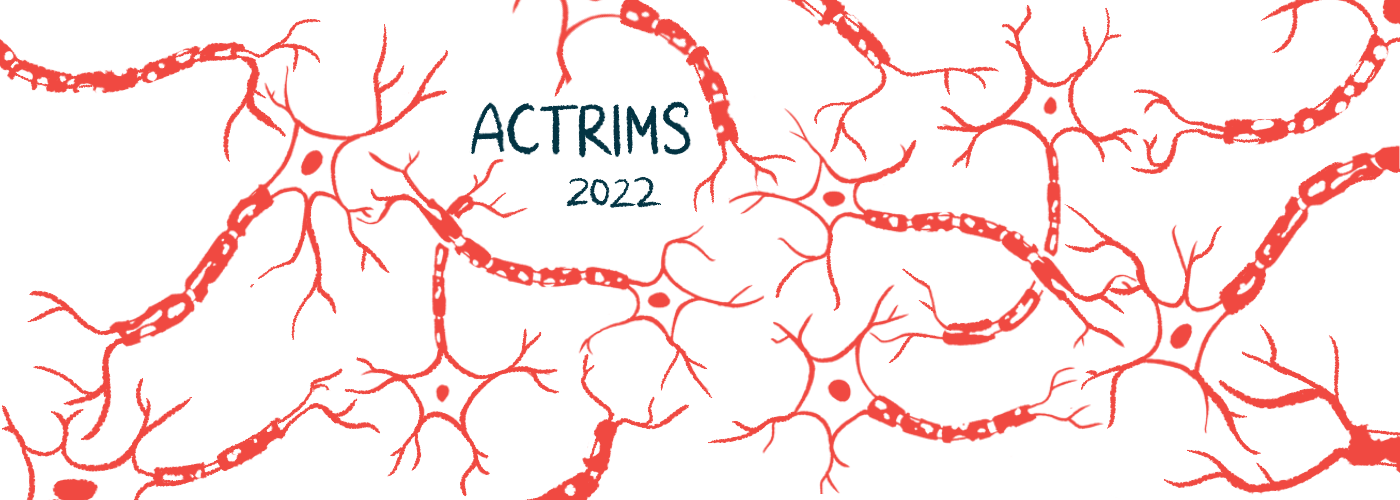#ACTRIMS2022 – Blood Proteins May Help Predict Disease Course

Blood levels of two proteins, GFAP and neurofilament light chain (NfL), may help predict the course of neuromyelitis optica spectrum disorder (NMOSD), according to new research.
Findings also suggest that many NMOSD patients have evidence of brain lesions with active inflammation without any associated symptoms, which indicates that disease activity may occur in two phases.
Bruce Cree, MD, PhD, from the University of California San Francisco, discussed these results in a talk titled “Prognostic Biomarkers of NMOSD,” at the Americas Committee for Treatment and Research in Multiple Sclerosis (ACTRIMS) Forum 2022, held Feb. 24–26 in Florida.
NMOSD occurs when the body’s immune system launches an inflammatory attack that damages parts of the nervous system, most commonly the spinal cord and the optic nerves, which connect the eyes to the brain. Efforts are ongoing to find new biological markers that can help predict the course of NMOSD and guide treatment.
Researchers conducted analyses using data from the Phase 2/3 N-MOmentum study (NCT02200770), in which 230 patients were randomly assigned to receive Uplizna (inebilizumab-cdon) or a placebo on days 1 and 15, and were followed for about 6.5 months.
After this, participants could enter an ongoing open-label extension (OLE) study and continue to receive Uplizna every six months to evaluate its long-term impact.
Trial results, which supported Uplizna’s 2020 approval in the U.S., showed it significantly reduced the annual rate of NMOSD attacks, compared with a placebo.
Uplizna, marketed by Horizon Therapeutics, works by killing immune cells called B-cells. In N-MOmentum, Uplizna treatment led to a rapid, sustained reduction in B-cell counts. Statistical analyses showed that patients with a greater B-cell depletion tended to have less severe disease symptoms and less evidence of nervous system damage on an MRI for at least two years after the first dose.
As part of their analyses, researchers looked for associations between various blood markers of proteins and clinical outcomes. Results showed that NMOSD patients in N-MOmentum had significantly higher glial fibrillary acidic protein (GFAP) levels than multiple sclerosis patients or people with no known disease, and that protein levels correlated with an increased risk of relapse.
GFAP is released into the blood when astrocytes, a type of support cell in the nervous system, are damaged by the immune attack in NMOSD.
The levels of GFAP protein also tended to spike within a week of relapses, reaching significantly higher levels at major attacks compared with minor ones.
Uplizna reduced the attack rate regardless of GFAP levels, which Cree called an “encouraging piece of information.”
An analysis of NfL, a protein biomarker that gets released into the blood when nerve cells are damaged, found that higher levels were associated with increased disability following NMOSD attacks.
“Serum NfL had the strongest correlation with worsening disability following acute attacks. Serum GFAP, on the other hand, correlated best with occurrence of attack,” Cree said.
“These observations suggest that serum GFAP could be a clinically meaningful, useful biomarker of disease activity and increased attack risk in NMOSD,” he added. “Similarly serum NfL could be used to identify those particular patients who are at greater risk for worsening disability following attacks. That might lead to more aggressive therapeutic interventions during the time of attack.”
Cree said these results will need to be validated in future studies.
In most cases of NMOSD attacks, symptoms were associated with corresponding nervous system damage visible on MRI scans. For example, 79% of patients exhibiting symptoms of acute optic neuritis, or inflammation of the optic nerves, had a visible inflammatory lesion on the corresponding optic nerve.
This was mostly expected, Cree said. But what was “unusual, and quite dramatic,” was that about a third of patients also had other new lesions that were not associated with apparent symptoms.
For example, among those with acute optic neuritis, 29% had an asymptomatic lesion in the spinal cord and 7% had a lesion in the brain that wasn’t causing obvious symptoms. Similarly, among patients with symptoms that indicated spinal cord inflammation, about 29% had asymptomatic lesions in the optic nerves and 14% had asymptomatic brain lesions.
“This was such a surprising event that we felt we had to have gotten it wrong,” Cree said.
A detailed review of the MRI data confirmed the findings.
This led the researchers to wonder if similar asymptomatic lesions might also be detectable in patients who are not experiencing a disease attack. An analysis of non-attack MRI data from 150 patients showed that 3% had new asymptomatic brain lesions with active inflammation, 18% had new spinal cord lesions, and 51% had new optic nerve lesions.
“Subclinical [inflammatory lesions] were observed in many patients who did not experience clinically overt attacks,” Cree concluded.
These findings suggest that NMOSD-related inflammation may occur in two distinct phases: one in which immune cells get into the brain and cause visible lesions, and a second, later phase, when inflammation causes nervous damage and obvious symptoms, Cree said.







